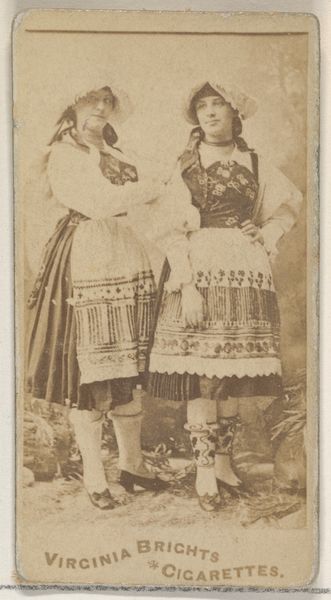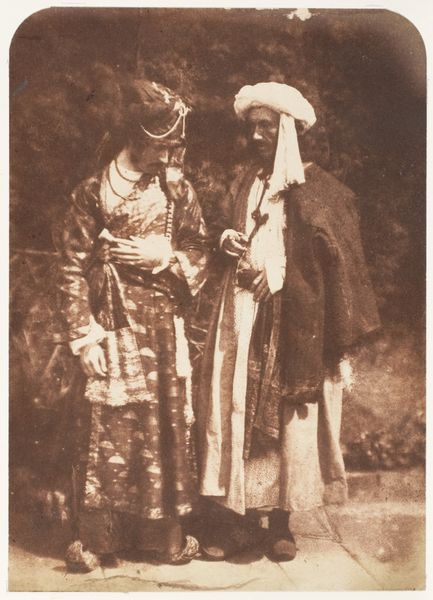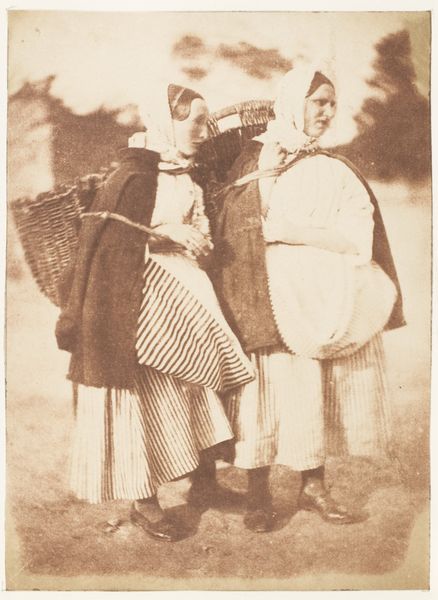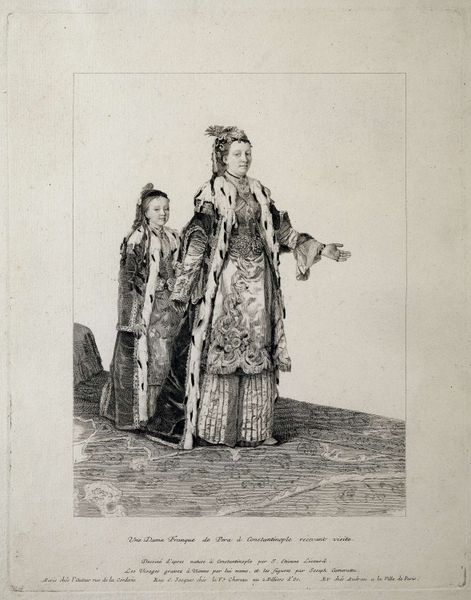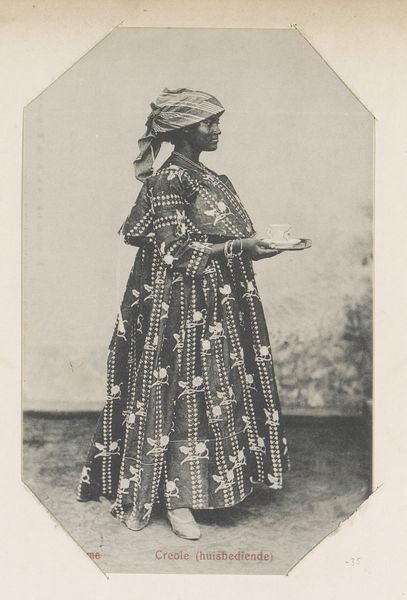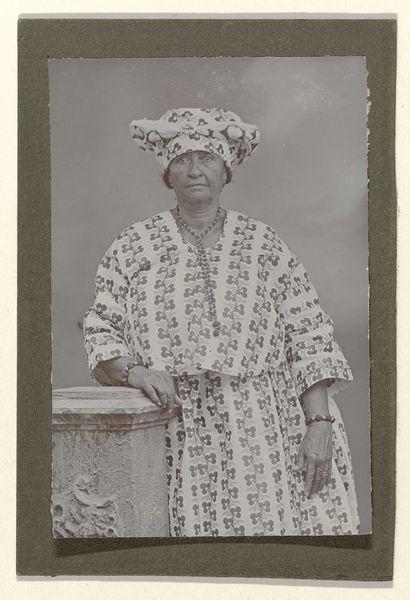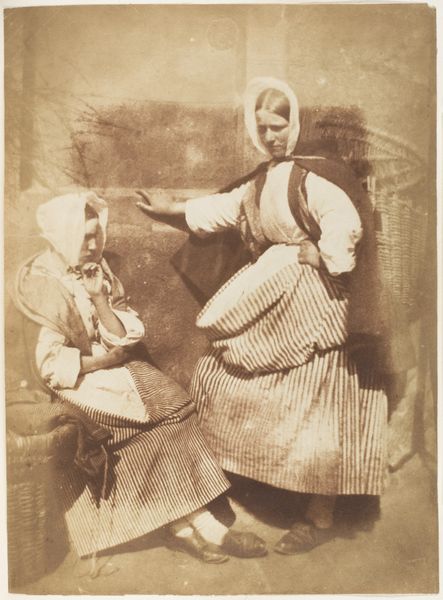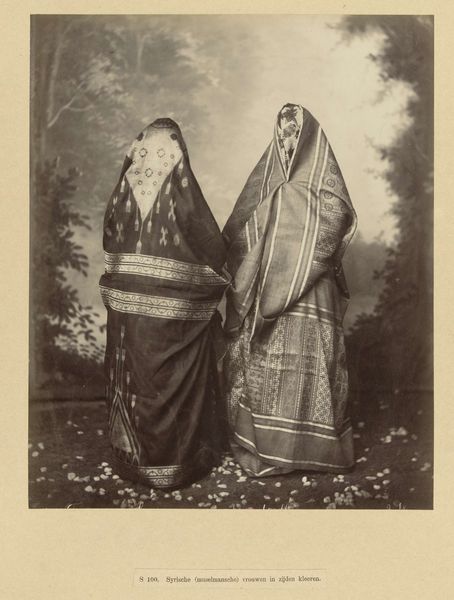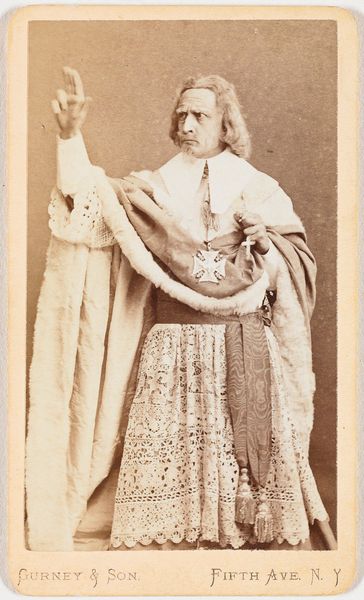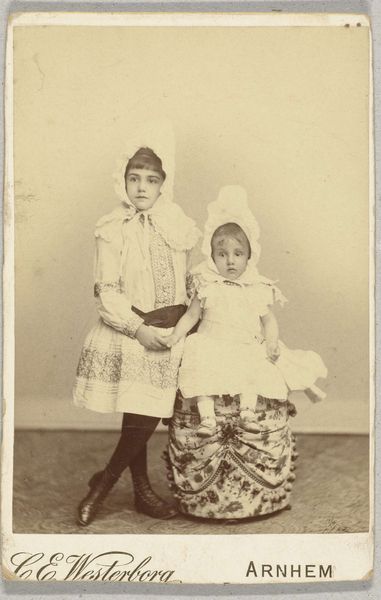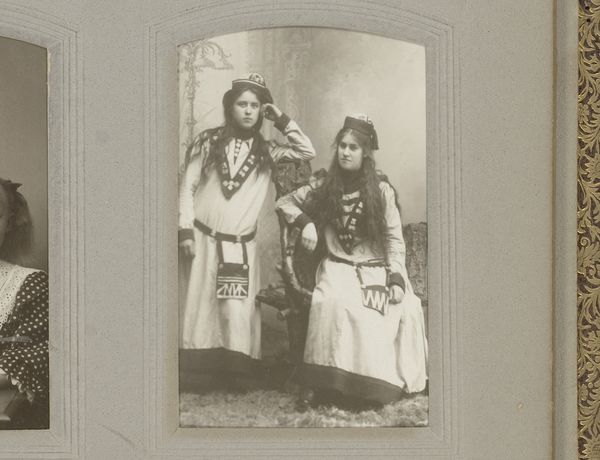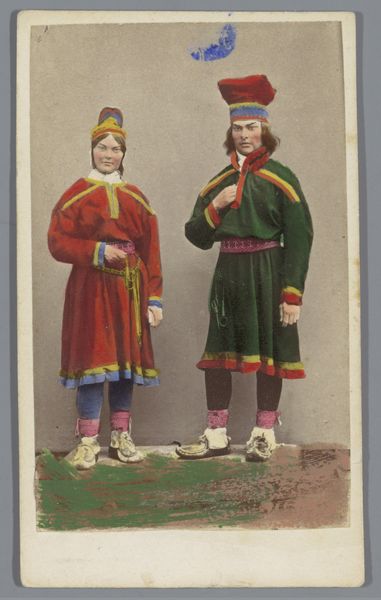
gelatin-silver-print, photography, gelatin-silver-print
#
portrait
#
gelatin-silver-print
#
photography
#
gelatin-silver-print
Dimensions: height 135 mm, width 90 mm
Copyright: Rijks Museum: Open Domain
Curator: Here we have a photograph from somewhere between 1900 and 1910 titled, "Surinaamse vrouwen in koto," which translates to "Surinamese women in koto." It's a gelatin silver print, currently held at the Rijksmuseum. Editor: Oh, those koto dresses! They’re absolutely hypnotic. It is like geometry having a very flamboyant, lively party! It has me daydreaming of the stories the cloth could tell... Curator: Right! The dresses are definitely central. These "koto" are traditional Afro-Surinamese dresses, each layer and fold whispering stories of history, identity, and resistance against colonial dress codes. The patterns themselves carry meanings understood within the community, you see, they communicate the wearer's status and personal story. Editor: So, we are talking coded sartorial messages. As a materialist, the fabric really jumps out to me – considering how difficult it was to produce consistent dyes, even in Europe, at the turn of the century. Those prints represent serious labor and trade relationships, right? Are these locally produced fabrics, or imported from Europe, maybe even Asia? Curator: A little from everywhere, perhaps? These garments were born out of both creativity and constraint. These fabrics probably represent this blending; the koto embodies the beauty created under limitations that the transatlantic trade system imposed. Editor: And photography itself... gelatin silver prints became quite common at this point. What fascinates me about these processes, is how accessible photography suddenly became. But that raises all sorts of tricky questions, doesn’t it? Who is taking the photos and for what purpose? The subjects feel carefully posed, the light deliberate. Curator: That's the golden question, isn't it? Are these images records, attempts at preservation, or artifacts of the colonial gaze? I look at the quiet strength in their eyes. Even within the constraints of the photo and of the koto itself, there is such a distinct, subtle sort of individuality. Editor: Absolutely, it speaks volumes about reclaiming agency in self-representation amidst a context that sought to define and confine them. The whole process--from the cotton fields to the photographer's darkroom--raises interesting, and really troubling, questions. I wonder what other stories those dress patterns conceal... Curator: Yes, and it serves as an enduring testimony to identity forged through art, heritage, and the spirit of two striking women wearing "koto."
Comments
No comments
Be the first to comment and join the conversation on the ultimate creative platform.
